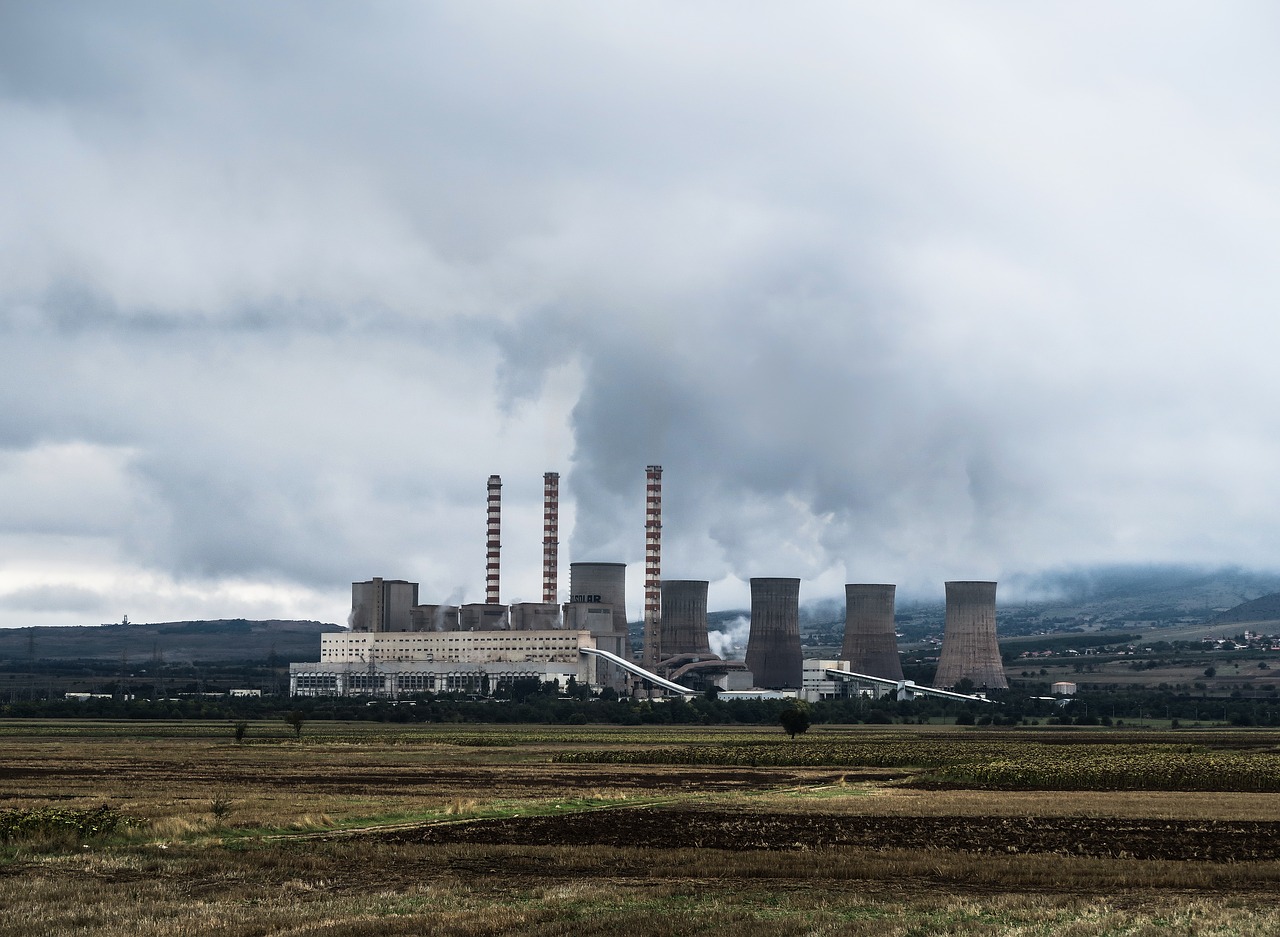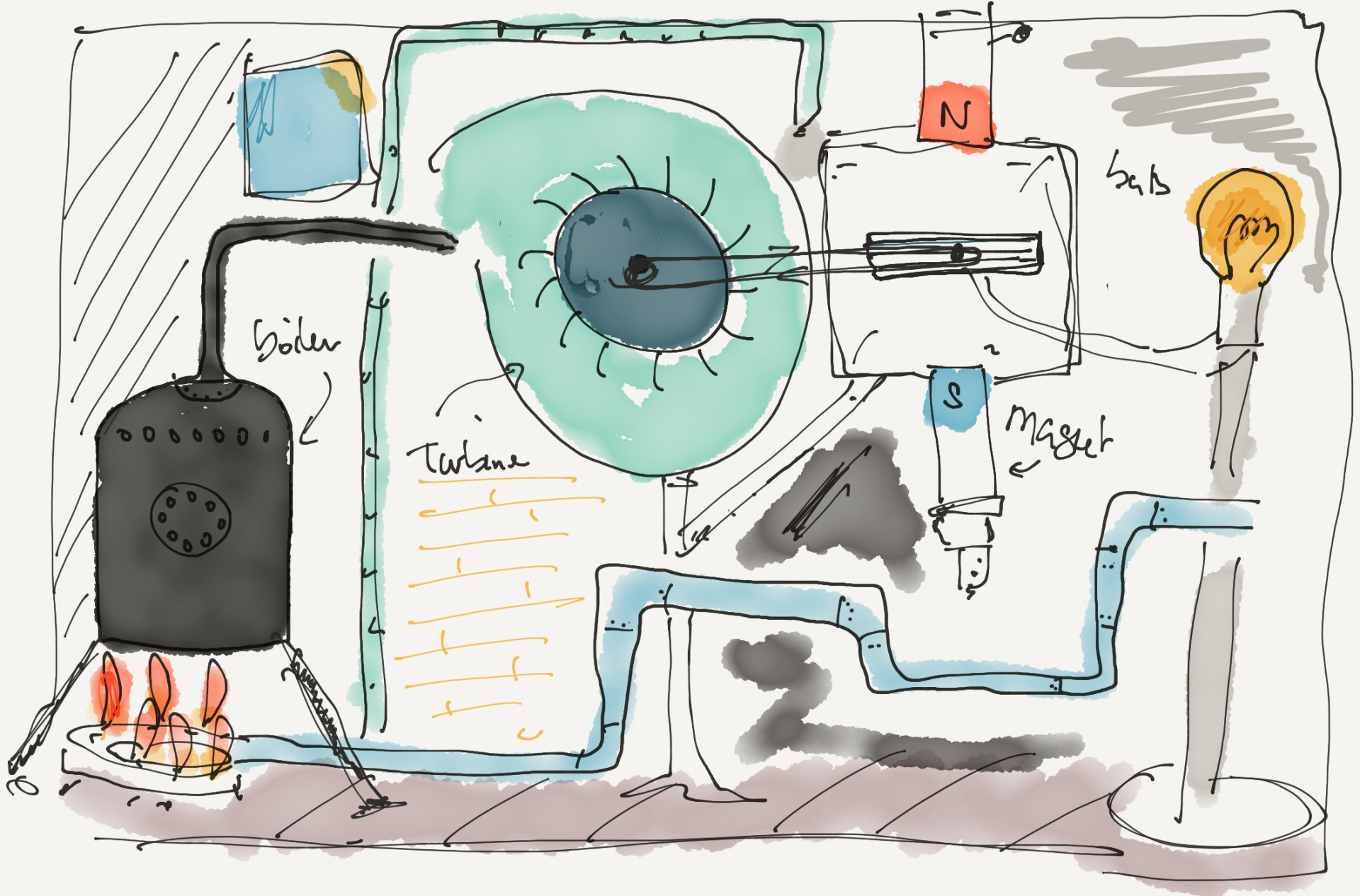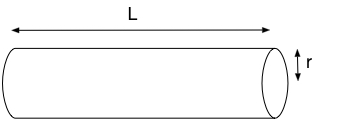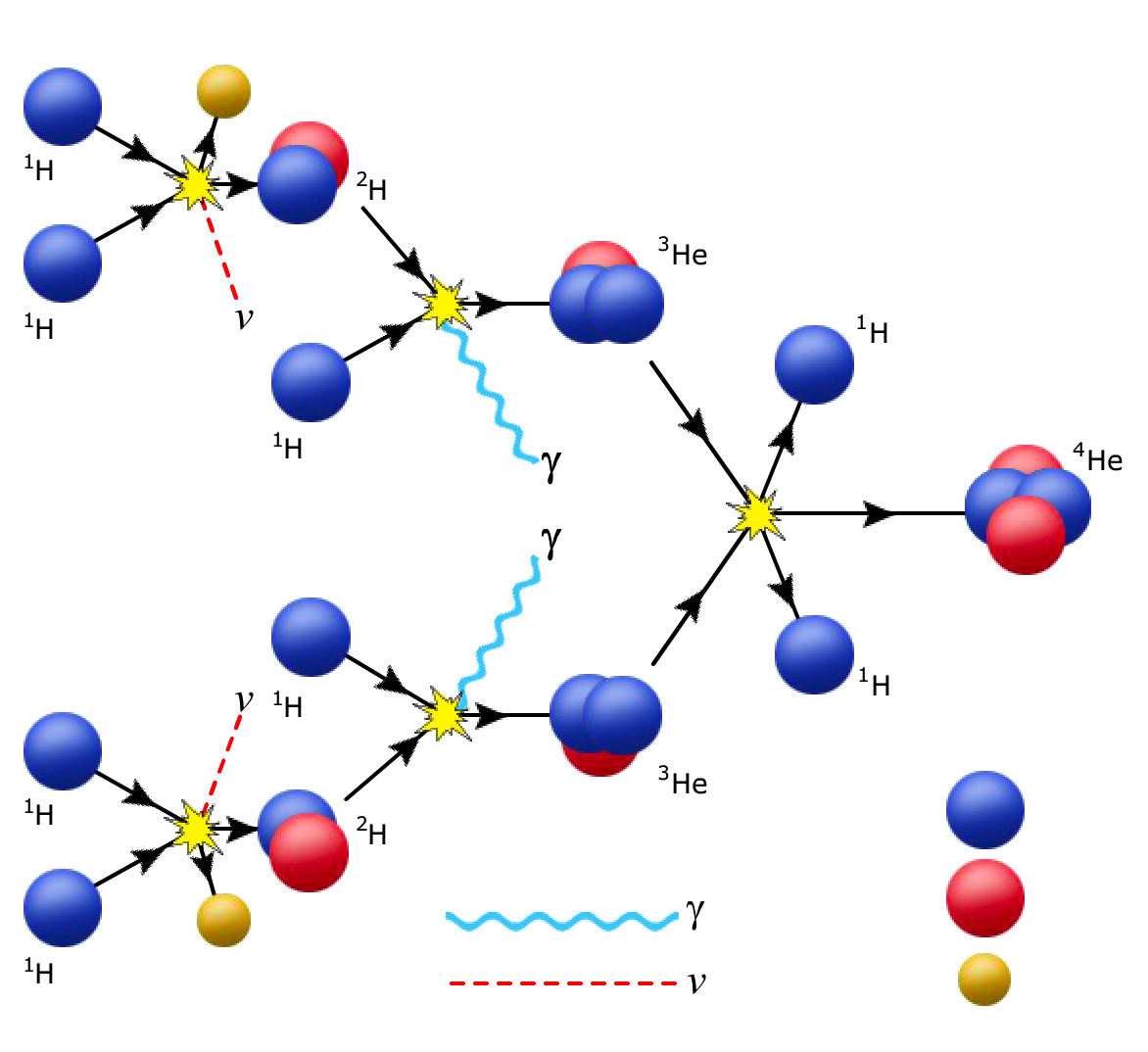 Here we will jump straight in with the most common form of electricity production worldwide - the fossil fuel power station. While quite difficult to draw (see below!), you will learn about the physics principles that govern the four key sections:
Here we will jump straight in with the most common form of electricity production worldwide - the fossil fuel power station. While quite difficult to draw (see below!), you will learn about the physics principles that govern the four key sections:
- Fuel
- Boiler
- Turbine
- Generator
Key Concepts
Specific energy is the ratio of the energy contained in a body to its mass, \(E\over m\). The unit of specific energy is J kg-1.
Like density, specific energy is an example of a material property where the dimensions of the body are irrelevant. If an energy requirement of a process is known, the amount of fuel required can be calculated.
There is also a concept termed energy density, for the ratio of the energy contained in a body to its volume, \(E\over V\). The unit of specific energy is J m-3.

Heat engines convert thermal energy into mechanical work.
The principle behind the operation of a heat engine can be described using a hot air balloon:
On the way up, fuel is combusted (burned in oxygen) to heat the air. The air molecules gain kinetic energy and spread out, so the air becomes less dense and rises. This lifts the balloon so it gains gravitational potential energy.
When the balloon is higher, the surroundings are lower in temperature. This cools the air inside the balloon, making it more dense and so it falls.
A cycle can form:
- When a gas is hot it, can do work.
- When the gas is cold, work done is done on it.
Think you know your power stations? Describe the purpose and energy changes in the sections of this sketch.

Check your answers below.
How much of Power stations have you understood?






 Twitter
Twitter  Facebook
Facebook  LinkedIn
LinkedIn